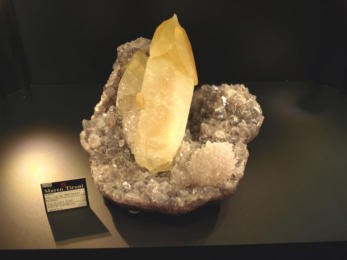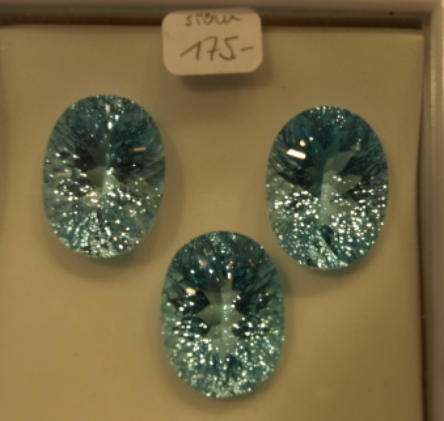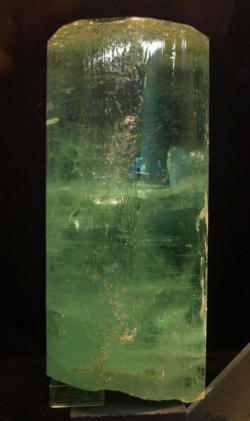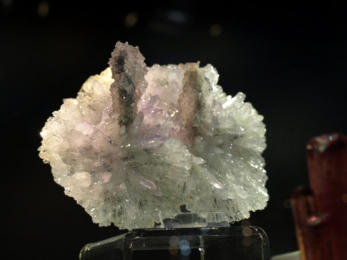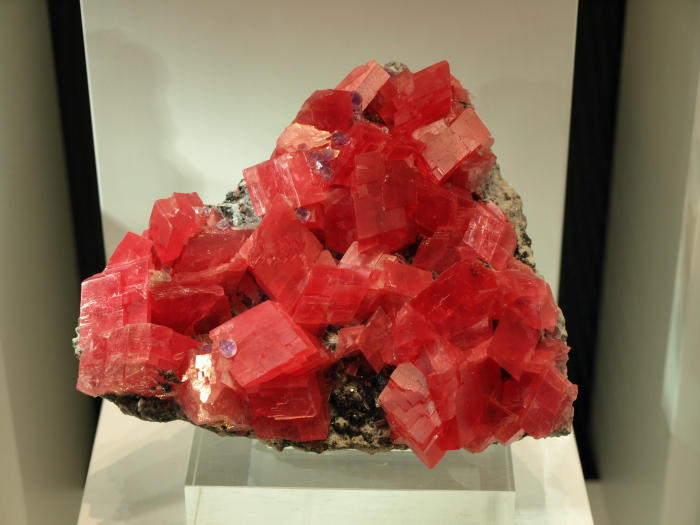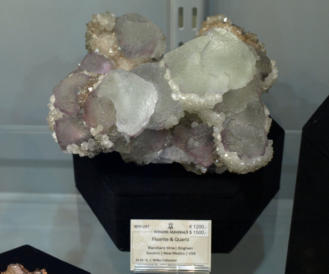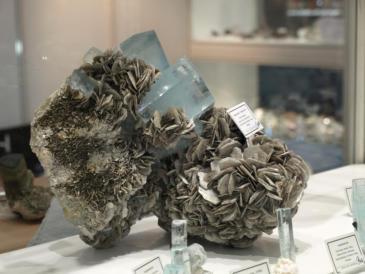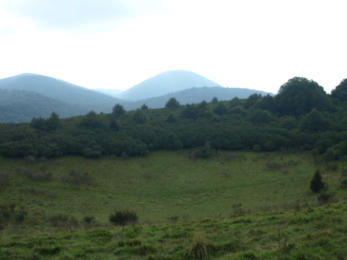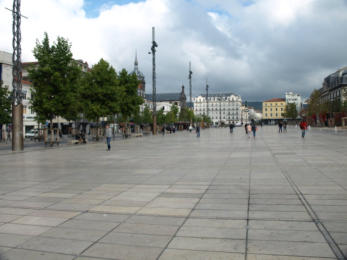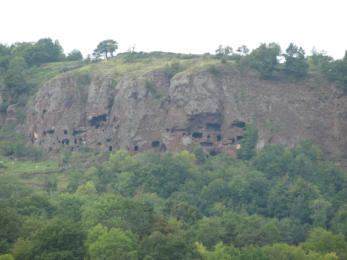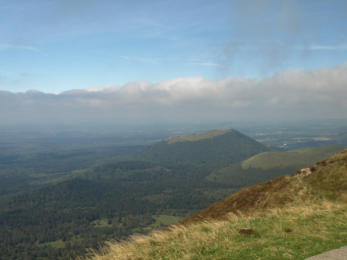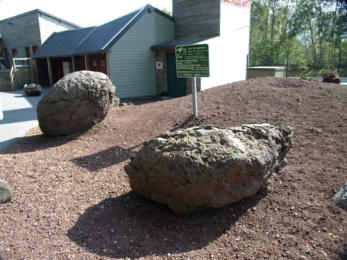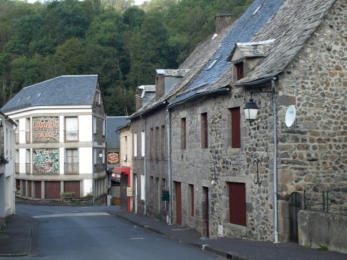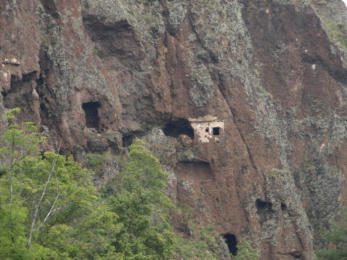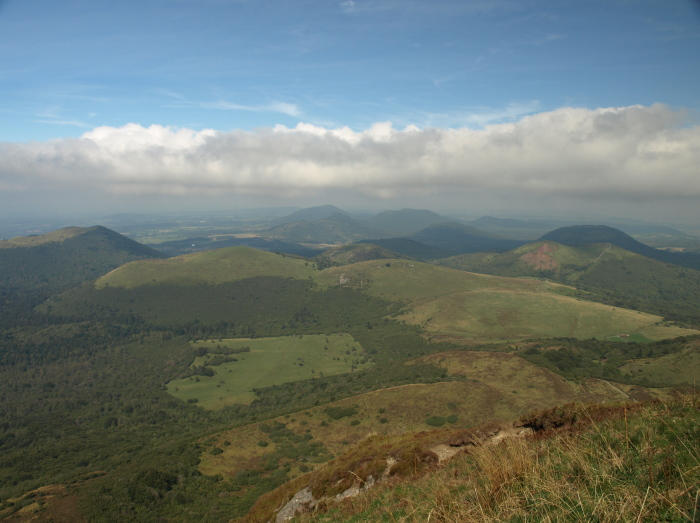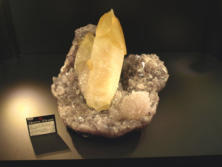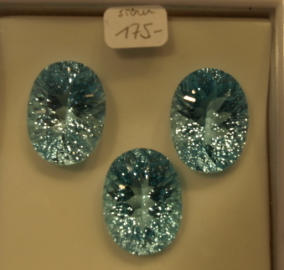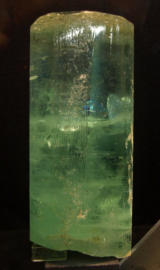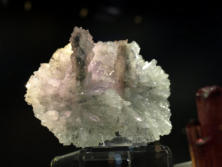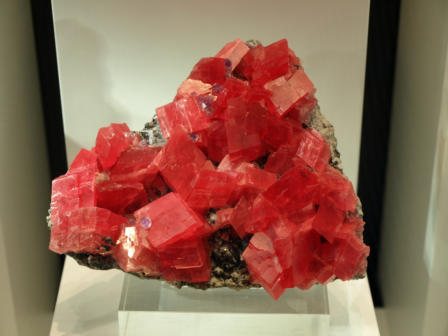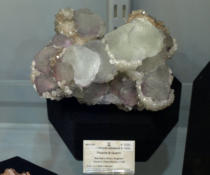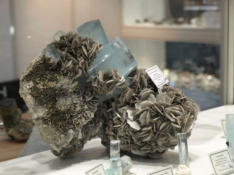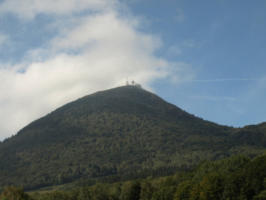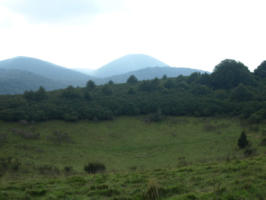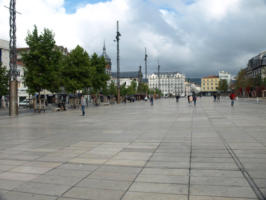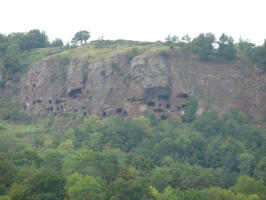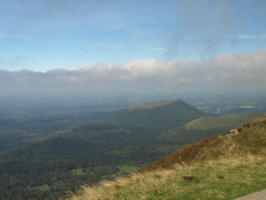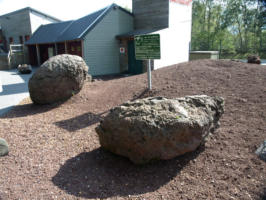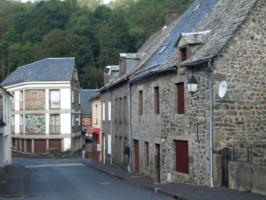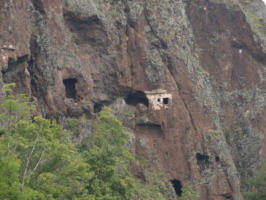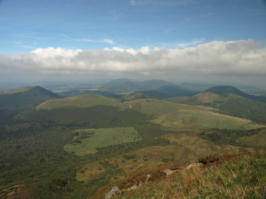


Malachite


During September and October, 2014, I was fortunate to be able to travel to France, Spain and
Germany. While in Paris I visited the Mineral Museum at Paris Mines Tech on two occasions to
view the great collection they have there. The Museum is located in Boulevard Saint Michel,
adjacent to the Palais du Luxembourg.
I also visited the Museum of Natural History but unfortunately the Geology/Mineral section
was closed for renovations. The collection at the Pierre and Marie Curie was also closed when
I visited.
2014 Munich Show
The Munich Show, ran from the 24-26th of October at the Munich Trade Fair Centre, which is readily
accessed using the local underground train system. The Trade Fair Centre, which was built on an ‘old’
airfield.It is enormous and it takes approximately 15 minutes by foot to walk from one end to the other. The
Show was located at the east end of the Trade Fair Centre with large crowds lined up at opening hour for
the public on Saturday morning. I met mineral collectors and lapidaries from England, France, Spain and
Germany while at the show. The mineral specimens on display were mind blowing, with prices to match!
There were great fossils on display and for sale and the lapidary products were impressive. Fantastic
carvings, magnificent jewellery, faceted gems, cabachons etc.
THE MASSIF CENTRAL
is located in the Auvergne Region, some 4 hours drive south of Paris. The capital of this region is Clermont-Ferrand,
the home of Michelin Tyre manufacturing.
The volcanoes in this region are the result of the collision between the Eurasian and African plates (continental drift).
Volcanic activity appeared in the Massif Central, but also in Bohemia and Germany, along an aborted rift known as the
Rhone-Rhine rift.
In the Massif Central, the main rock is rhyolite, a viscous/acidic rock of the same chemical composition as Granite (the
Granite has cooled slowly at depth so has larger crystals than rhyolite which is fine grained by comparison). There are
many other types of rocks present, including basalt, which has been widely used as a building material locally.
Volcanic activity in the Auvergne began 65 million years ago, further north in Burgundy. The volcanoes I first visited
were the Puys.
‘The Chaine des Puys’
This chain of volcanoes, some 40 km long, are ‘young’ in terms of volcanoes, being formed over 70,000 years
including eruptions occurring during the last 10,000 years. All, bar ‘Puy de Dome’, were produced by a single eruption
lasting a few days or months.
Puy de Dome (1,465m), which dominates the chain, was formed over a period of probably less than two years by
multiple explosions and viscous lava flows. It rises some 200m above other volcanoes in the chain.
Many features found in the chain are similar to those we observe in the Western District in Victoria. These include
Cinder cones
Volcanic bombs
Maar craters
Maar craters with lakes
Many of the Maar craters have pyroclastic rings (formed from explosion debris) as seen in Western Victoria.
L to R: Amethyst on Calcite; Amethyst on Quartz; Azurite, Bisbee Arizona;
Beryl, Brazil
L to R: Realgar; Rhodochrosite, South Africa; Vivianite, Cameroun;
Hemimorphite, Italy; Sphericular Magnesite
L to R: Brazilianite, Brazil; Calcite, France; Calcite on Quartz;
Chrysocolla, Arizona
L toR; Molybdenite, Madagascar;
Flourite and Quartz
R: Beryl on Muscovite
L: Calcite on Quartz
R: Quartz
L: Concave Faceting
R: Beryl Crystal.
Rhodochrosite, Sweet Home
Mine, Colorado, USA
L to R: Pargasite 680 euro; Spectacular red quartz
specimens (2 photos); A lovely Tourmaline specimen for
4500 euro
The above 4 photos were typical of the range of
faceted/semi-facted gems on display, including concave
faceting and combined faceting and carving of gems.
L to R: Flourite on Muscovite; Malachite and Pyrites:
Beryl crystals of spectacular quality; Tourmaline (15000
euro)
L to R: Stibnite: A magnificent Realgar and
Orpiment specimen, appox. 400mm high; Flourite
China; Mineral display case.
L to R: Overlooking hall A6 at the Munich Show;
Aquamarine Namibia; A truly spectacular, large,
Calcite on Amethyst; A beautiful Tourmaline crystal.
L to R: Quartz Brazil; Tourmaline; A spectacular,
large Calcite on Amethyst; Fossils
L to R: Hermiker Diamonds Quartz; Tanzanite; Entry
to show; Concave faceted gems
L to R: Megalodon tooth; Ammonite fossil: Fossil
specimens of this quality and size requires a lot of
painstaking work!; Not the sort of Dinosaur you would
want to meet!
Three spectacular gem necklaces plus an agate
carving.
Looking North from Puy de
Dome over the Chain de Puys
L: Puy de Dome, the highest
volcanoe in the Chaine des
Puys
R: Looking North from Puy
de Dome over the Chain de
Puys
L: Looking down into a cinder
cone crater in the Chain de
Puys. This reminded me of Mt
Rouse at Penshurst in
Victoria.
R: Volcanic ‘bombs’ in the
Chain de Puys, these are very
familiar to fossickers at Mt
Shadwell in Mortlake, Victoria
L: Clermont-Ferrand, the
capital of the Auvergne.
R: Orcival, a small town s.w.
of Clermont-Ferrand, where
the buildings make extensive
use of local volcanic rocks.
L: Besse-et-St-Anestaise,
showing cliff dwellings carved
into the volcanic rock.
R: A closer view of the cliff
dwellings at Besse-et-St-
Anestaise


- index
- contact-us
- club activities 2021 -
- Club activities 2021 --a
- Club activities 2021 --b
- club activities 2019_20
- club activities 2017_18
- club activities 2016
- club activities 2015_2014
- club activities 2013_2012_2011
- club activities 2010_2009_2008
- club activities 2007_2006_2005_2004
- club shows 2004_2016
- club shows 2018 _
- office bearers and life members
- club history
- links
- fossicking in south west victoria
- places you might like to visit
- europe 2014
- usa_canada_gems_geology
- Canada_hawaii_gems_geology
- gem_mineral collections
- some australian gems
- Gem articles
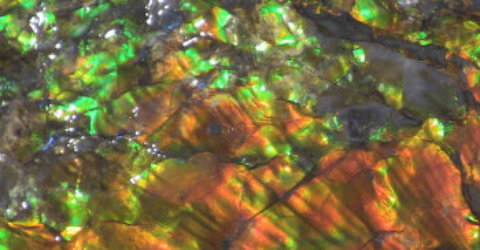


Elbaite crystals


During September and October, 2014, I was fortunate to be able to
travel to France, Spain and Germany. While in Paris I visited the Mineral
Museum at Paris Mines Tech on two occasions to view the great
collection they have there. The Museum is located in Boulevard Saint
Michel, adjacent to the Palais du Luxembourg.
I also visited the Museum of Natural History but unfortunately the
Geology/Mineral section was closed for renovations. The collection at
the Pierre and Marie Curie was also closed when I visited.
2014 Munich Show
The Munich Show, ran from the 24-26th of October at the Munich
Trade Fair Centre, which is readily accessed using the local
underground train system. The Trade Fair Centre, which was built
on an ‘old’ airfield.It is enormous and it takes approximately 15
minutes by foot to walk from one end to the other. The Show was
located at the east end of the Trade Fair Centre with large crowds
lined up at opening hour for the public on Saturday morning. I met
mineral collectors and lapidaries from England, France, Spain and
Germany while at the show. The mineral specimens on display
were mind blowing, with prices to match! There were great fossils
on display and for sale and the lapidary products were impressive.
Fantastic carvings, magnificent jewellery, faceted gems,
cabachons etc.
THE MASSIF CENTRAL
is located in the Auvergne Region, some 4 hours drive south of Paris.
The capital of this region is Clermont-Ferrand, the home of Michelin
Tyre manufacturing.
The volcanoes in this region are the result of the collision between the
Eurasian and African plates (continental drift). Volcanic activity
appeared in the Massif Central, but also in Bohemia and Germany,
along an aborted rift known as the Rhone-Rhine rift.
In the Massif Central, the main rock is rhyolite, a viscous/acidic rock of
the same chemical composition as Granite (the Granite has cooled
slowly at depth so has larger crystals than rhyolite which is fine grained
by comparison). There are many other types of rocks present,
including basalt, which has been widely used as a building material
locally.
Volcanic activity in the Auvergne began 65 million years ago, further
north in Burgundy. The volcanoes I first visited were the Puys.
‘The Chaine des Puys’
This chain of volcanoes, some 40 km long, are ‘young’ in terms of
volcanoes, being formed over 70,000 years including eruptions
occurring during the last 10,000 years. All, bar ‘Puy de Dome’, were
produced by a single eruption lasting a few days or months.
Puy de Dome (1,465m), which dominates the chain, was formed over
a period of probably less than two years by multiple explosions and
viscous lava flows. It rises some 200m above other volcanoes in the
chain.
Many features found in the chain are similar to those we observe in the
Western District in Victoria. These include
Cinder cones
Volcanic bombs
Maar craters
Maar craters with lakes
Many of the Maar craters have pyroclastic rings (formed from
explosion debris) as seen in Western Victoria.
L to R: Amethyst on Calcite; Amethyst on Quartz; Azurite, Bisbee Arizona;
Beryl, Brazil
L to R: Realgar, China; Rhodochrosite, South Africa; Vivianite, Cameroun;
Hemimorphite, Italy; Sphericular Magnesite
Photos below: L to R: Row 1 Flourite & Quartz; Beryl on Muscovite; Row 2
Calcite on Quartz; Quartz; Row 3 Concave Faceting; Beryl
Row 4 Rhodochrosite, Sweet Home Mine, Colorado, USA
The above 4 photos were typical of the range of
faceted/semi-facted gems on display, including concave
faceting and combined faceting and carving of gems.
L to R: Stibnite: A magnificent Realgar and
Orpiment specimen, appox. 400mm high; Flourite
China; Mineral display case.
L to R: Quartz Brazil; Tourmaline; A spectacular,
large Calcite on Amethyst; Fossils
L to R: Hermiker Diamonds Quartz; Tanzanite; Entry
to show; Concave faceted gems
Looking North from Puy
de Dome over the Chain
de Puys
Puy de Dome, the
highest volcanoe in the
Chaine des Puys
Looking North from Puy
de Dome over the Chain
de Puys
Looking down into a
cinder cone crater in the
Chain de Puys. This
reminded me of Mt
Rouse at Penshurst in
Victoria.
Volcanic ‘bombs’ in the
Chain de Puys, these are
very familiar to fossickers
at Mt Shadwell in
Mortlake, Victoria
Clermont-Ferrand, the
capital of the Auvergne.
Orcival, a small town
s.w. of Clermont-Ferrand,
where the buildings make
extensive use of local
volcanic rocks.
Besse-et-St-Anestaise,
showing cliff dwellings
carved into the volcanic
rock.
A closer view of the cliff
dwellings at Besse-et-St-
Anestaise


- index
- contact-us
- club activities 2021 -
- Club activities 2021 --a
- Club activities 2021 --b
- club activities 2019_20
- club activities 2017_18
- club activities 2016
- club activities 2015_2014
- club activities 2013_2012_2011
- club activities 2010_2009_2008
- club activities 2007_2006_2005_2004
- club shows 2004_2016
- club shows 2018 _
- office bearers and life members
- club history
- links
- fossicking in south west victoria
- places you might like to visit
- europe 2014
- usa_canada_gems_geology
- Canada_hawaii_gems_geology
- gem_mineral collections
- some australian gems
- Gem articles




